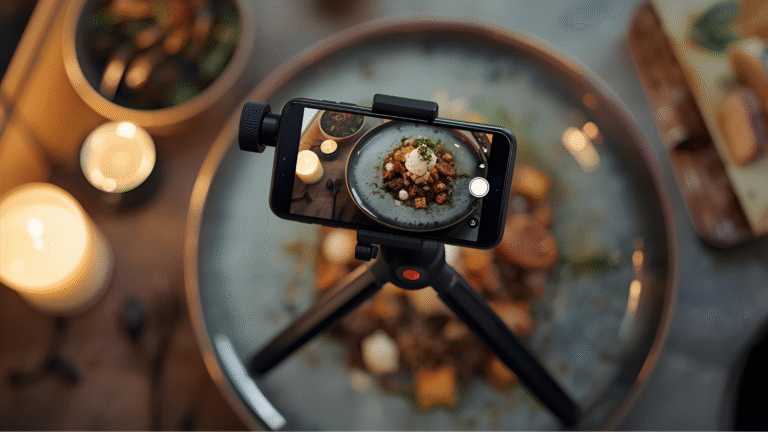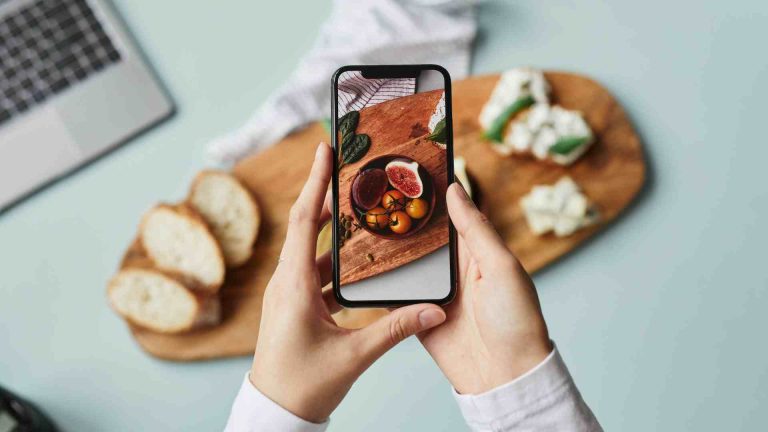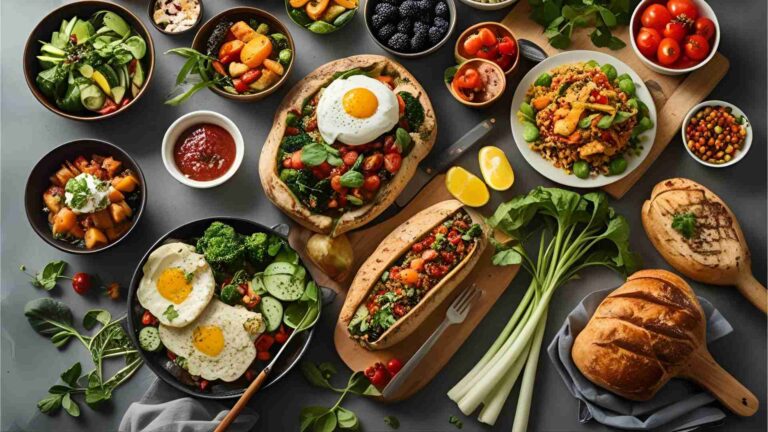How to Write About Food in a Personal, Engaging Way
Food writing is an art form that transcends mere descriptions of taste and texture. It’s about storytelling, evoking emotions, and connecting with readers on a sensory and personal level. Whether you’re penning a restaurant review, crafting a recipe, or sharing a food memoir, the goal is to make readers feel the experience—taste the dish, smell the aromas, and relive the moment. This guide dives deep into how to write about food in a way that’s personal, engaging, and memorable, offering practical tips, examples, and strategies to help you stand out in this competitive field.
Why Food Writing Matters
Food is universal, yet deeply personal. It’s tied to culture, memory, and emotion. A well-written piece about food doesn’t just describe a meal—it transports readers to a specific time and place, sparking nostalgia or curiosity. Food writing matters because it bridges human experiences, from the joy of a family recipe to the adventure of trying an exotic dish. To write engagingly, you must tap into this universal connection while infusing your unique perspective.
Tip 1: Find Your Voice Through Different Styles of Food Writing
Food writing is diverse, encompassing various styles that require distinct tones and approaches. Experimenting with these styles helps you discover your voice and hone your craft.
Popular Styles of Food Writing
| Style | Description | Key Skills |
|---|---|---|
| Restaurant Reviews | Critiques of dining experiences, covering food, service, ambiance, and value. | Analytical thinking, vivid description |
| Culinary Journalism | In-depth articles on food trends, sustainability, or cultural influences. | Research, storytelling, objectivity |
| Food Blogs | Personal narratives, recipes, and tips, often paired with vibrant visuals. | Conversational tone, photography skills |
| Cookbook Writing | Step-by-step recipes with tips, substitutions, and cultural context. | Precision, clarity, creativity |
| Food Memoirs | Autobiographical stories centered on food and personal experiences. | Emotional depth, narrative structure |
| Food Travel Writing | Accounts of culinary adventures, exploring local cuisines and markets. | Sensory detail, cultural sensitivity |
How to Get Started
- Experiment: Try writing a restaurant review one week and a personal food memoir the next. Notice which style feels most natural.
- Pitch Ideas: Submit your work to newspapers, magazines, or online platforms. Tailor pitches to the publication’s audience—e.g., a trendy food blog might love a piece on vegan street food, while a literary journal may prefer a memoir about your grandmother’s kitchen.
- Build a Portfolio: Publish your work on a personal blog or platforms like Medium to showcase versatility. The more diverse your portfolio, the greater your credibility.
User Insight
“I started with a blog about my family’s recipes, but experimenting with restaurant reviews helped me find my knack for witty critique. It’s like discovering a new spice!” – Sarah, aspiring food writer.
Tip 2: Learn from the Masters
Reading iconic food writing exposes you to different styles, techniques, and perspectives. It’s like tasting a variety of dishes to understand what makes a meal unforgettable.
Must-Read Food Writing
- Kitchen Confidential by Anthony Bourdain: A raw, behind-the-scenes look at the restaurant world, blending humor and grit.
- The Omnivore’s Dilemma by Michael Pollan: A journalistic exploration of food systems, from farm to plate.
- My Life in France by Julia Child with Alex Prud’homme: A memoir celebrating French cuisine and Child’s culinary journey.
- The Gastronomical Me by M.F.K. Fisher: A lyrical collection of essays tying food to life’s joys and sorrows.
How to Apply Their Lessons
- Study Structure: Notice how Bourdain uses anecdotes to draw readers in or how Fisher weaves sensory details into her prose.
- Analyze Voice: Pollan’s investigative tone contrasts with Child’s warm, conversational style. Which resonates with you?
- Follow Blogs: Modern food bloggers like Minimalist Baker or Smitten Kitchen offer insights into engaging online audiences. Study their visuals and marketing tactics.
Example Analysis
In The Gastronomical Me, Fisher writes: “The first thing I remember tasting and then wanting to taste again is the grayish-pink fuzz my grandmother skimmed from a spitting kettle of strawberry jam.” This sentence is vivid, unexpected, and evocative, pulling readers into a childhood memory. Try writing a sentence about your earliest food memory with similar sensory specificity.
Tip 3: Sharpen Your Skills with Food Writing Courses
While raw talent is a great starting point, structured learning can elevate your craft. Food writing courses provide feedback, networking opportunities, and a deeper understanding of the genre.
Types of Courses
| Platform | Course Example | Cost | Key Benefits |
|---|---|---|---|
| Coursera | Creative Writing Specialization | $49/month | Flexible, self-paced, broad writing skills |
| MasterClass | Ruth Reichl Teaches Food Writing | $180/year | Insights from a renowned food critic |
| Gotham Writers Workshop | Food Writing Workshop | $400-$500 | In-person or online, expert feedback |
| Local Workshops | Community college or culinary school classes | Varies ($100-$300) | Hands-on experience, local networking |
Why Invest in a Course?
- Feedback: Instructors critique your work, helping you refine your voice.
- Networking: Connect with peers and professionals who can open doors.
- Structure: Learn to balance sensory detail, narrative, and factual reporting.
User Review
“I took a Gotham Writers Workshop course, and the instructor’s feedback on my restaurant review was a game-changer. I learned to cut fluff and focus on vivid verbs. Worth every penny!” – Mark, freelance writer.
Tip 4: Stay Ahead with Food Trends
Writing about emerging trends keeps your content fresh and relevant. New restaurants, cooking techniques, or dietary movements offer untapped opportunities with less competition.
Current Food Trends
- Plant-Based Innovation: From lab-grown meat to creative vegan desserts.
- Sustainable Practices: Farm-to-table dining and zero-waste cooking.
- Global Fusion: Dishes blending cuisines, like Korean tacos or Indian-inspired pizza.
- Hyper-Local Ingredients: Chefs sourcing from nearby farms or foragers.
How to Write About Trends
- Research Thoroughly: Consult reputable sources like industry reports or chef interviews.
- Acknowledge Origins: If writing about a “new” dish like poke bowls, credit its Hawaiian roots to avoid cultural misrepresentation.
- Engage Readers: Pose questions like, “Can plant-based burgers ever replace the real thing?” to spark curiosity.
Example
Instead of writing about a decades-old diner, review a new eatery specializing in sustainable seafood. Describe the chef’s commitment to local sourcing, the briny freshness of oysters, and the minimalist vibe of the dining room. This approach feels current and draws readers eager for novel experiences.
Tip 5: Collaborate for Deeper Insights
Collaboration enriches your writing by offering fresh perspectives and expanding your reach.
Collaboration Ideas
| Partner | Benefits | Example Collaboration |
|---|---|---|
| Chefs | Exclusive recipes, behind-the-scenes stories | Co-write a feature on a chef’s signature dish |
| Food Bloggers | Cross-promotion, guest posts | Swap blog posts to reach new audiences |
| Farmers/Producers | Insights into ingredients, sustainability | Profile a local farm’s heirloom tomatoes |
| Food Brands | Sponsored content, product reviews | Review a new kitchen gadget with affiliate links |
Collaboration Tips
- Be Transparent: Disclose sponsored content to maintain trust.
- Seek Mutual Benefit: Ensure collaborations align with your niche and values.
- Build Relationships: Attend food events or join online communities to meet potential partners.
User Insight
“Partnering with a local chef for a blog post was a win-win. I got an exclusive recipe, and he got exposure. My readers loved the authenticity!” Emily, food blogger.
Tip 6: Capture the Full Experience
Great food writing goes beyond the plate. It’s about the ambiance, the people, and the emotions tied to the meal.
Elements to Include
- Sensory Details: Describe the crunch of a baguette, the scent of roasted garlic, or the warmth of a candlelit room.
- Context: Share the cultural history of a dish or the story behind a restaurant’s founding.
- Personal Connection: Reflect on why the food matters to you—perhaps a recipe reminds you of home.
Example
Instead of writing, “The pasta was delicious,” try: “The fettuccine, slick with olive oil and flecked with basil, twirled around my fork like a dancer. In the cozy trattoria, laughter from neighboring tables mingled with the clink of wine glasses, reminding me of summer evenings at my Nonna’s house.”
Storytelling Techniques
- Narrative Arc: Frame your piece around a moment, like the first bite of a life-changing dish.
- Emotional Depth: Connect the food to joy, loss, or discovery.
- Vivid Imagery: Use metaphors, like comparing a spicy sauce to a “volcano erupting.”
Tip 7: Promote Your Work Effectively
In a crowded digital landscape, promotion is key to building an audience and establishing your brand.
Promotion Strategies
| Platform | Tactic | Tools |
|---|---|---|
| Personal Website | Showcase portfolio, blog regularly | WordPress, WP Recipe Maker |
| Social Media | Share visuals, engage followers | Instagram, Twitter, Pinterest |
| Email Newsletter | Send updates, recipes, or exclusive content | Mailchimp, Substack |
| Guest Posts | Write for established blogs or magazines | Pitch editors directly |
Optimizing Your Website
- Use WP Recipe Maker: This WordPress plugin creates SEO-friendly recipe cards with features like:
- Template Editor: Customize designs to match your brand.
- Ingredient Links: Add affiliate links for monetization.
- Video Support: Embed cooking videos for social media sharing.
- Price: Starts at $49/year with a 30-day money-back guarantee.
- SEO Best Practices: Use tools like LongShot AI to optimize for keywords like “food writing tips” or “easy recipes,” ensuring your content ranks higher on Google.
Social Media Tips
- Hashtags: Use #Foodie or #RecipeInspo to boost discoverability.
- Engage: Respond to comments and share followers’ food photos.
- Visuals: Post high-quality images or short videos of dishes.
User Review
“WP Recipe Maker transformed my blog. My recipe posts look professional, and the SEO features helped me rank higher on Google. I’ve doubled my traffic!” Lisa, food blogger.
Practical Tips for Engaging Food Writing
Here are additional strategies to make your writing stand out:
1. Engage All Senses
Don’t just focus on taste. Describe the sizzle of a steak, the glossy sheen of a glaze, or the weight of a rustic wooden spoon. For example: “The curry bubbled in the pot, its turmeric glow promising warmth, while the air hummed with cumin and coriander.”
2. Avoid Clichés
Words like “delicious” or “tasty” are overused. Instead, say a dessert is “velvety with a whisper of citrus” or a soup is “hearty as a winter hearth.” Keep a thesaurus handy or brainstorm similes.
3. Be Adventurous
Don’t shy away from unusual foods. One writer recalls eating fried tarantulas in Cambodia, describing them as “crisp, like teriyaki chicken scraps.” Such experiences broaden your perspective and captivate readers.
4. Tell a Story
Frame your writing around a narrative. For a recipe, share its origins: “This apple pie recipe came from my aunt, who baked it every fall, her kitchen smelling of cinnamon and nostalgia.”
5. Edit Ruthlessly
Cut adjectives and vague terms. Instead of “The juicy, flavorful steak was very delicious,” write: “The steak, seared to a caramel crust, released a flood of savory juices.”
Common Pitfalls and How to Avoid Them
| Pitfall | Solution |
|---|---|
| Overusing Adjectives | Limit to one vivid adjective per description, e.g., “silky” instead of “buttery, smooth, silky.” |
| Ignoring Cultural Context | Research origins and credit cultures accurately to avoid appropriation. |
| Being Too Picky | Stay open to new foods to expand your writing range. |
| Neglecting Visuals | Pair writing with high-quality photos or videos to enhance engagement. |
| Getting Jaded | Take breaks or explore new niches, like chef profiles, to stay inspired. |
Monetizing Your Food Writing
Food writing can be a rewarding career. Here are ways to earn income:
| Method | Description | Potential Earnings |
|---|---|---|
| Sponsored Posts | Partner with brands for paid content. | $100-$5,000/post |
| Affiliate Marketing | Earn commissions via ingredient or gadget links. | $50-$1,000/month |
| Cookbooks | Publish recipe collections or memoirs. | Varies ($1,000-$50,000) |
| Freelance Articles | Write for magazines or websites. | $0.50-$2/word |
| Workshops/Events | Host cooking classes or speak at food festivals. | $200-$2,000/event |
Pricing Insight
- WP Recipe Maker: $49/year for single-site license, $99/year for unlimited sites.
- LongShot AI: Starts at $29/month for SEO optimization and content generation.
- Photography Gear: A decent camera (e.g., Canon EOS M50) costs $500-$700, but a smartphone with editing apps can suffice initially.
FAQs About Food Writing
What makes food writing engaging?
Vivid sensory details, personal stories, and cultural insights captivate readers.
Do I need a culinary degree?
No, but knowledge of cooking techniques and food history enhances credibility.
How do I start a food blog?
Choose a niche, create a website, and post regularly with strong visuals and SEO.
Can AI tools help?
Yes, tools like LongShot AI optimize SEO and suggest creative content ideas.
Conclusion
Writing about food in a personal, engaging way is like cooking a memorable dish—it requires passion, skill, and a dash of creativity. By experimenting with styles, learning from iconic writers, honing your craft, and embracing trends, you can craft stories that resonate with readers. Collaborate with others, capture the full sensory experience, and promote your work strategically to build a lasting presence in the food writing world.
Every bite has a story, and your words can bring it to life. So, grab your pen—or keyboard—and start weaving culinary tales that leave readers hungry for more. Happy writing!
Please share this How to Write About Food in a Personal, Engaging Way? with your friends and do a comment below about your feedback.
We will meet you on next article.
Until you can read, How to Write a Food Blog Post?






